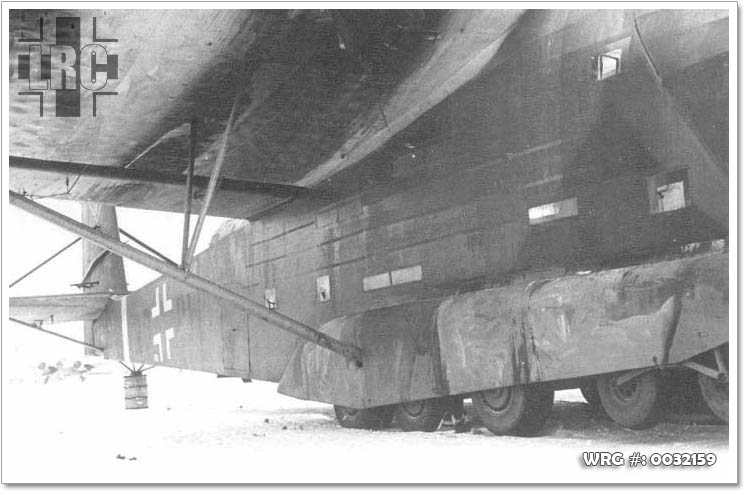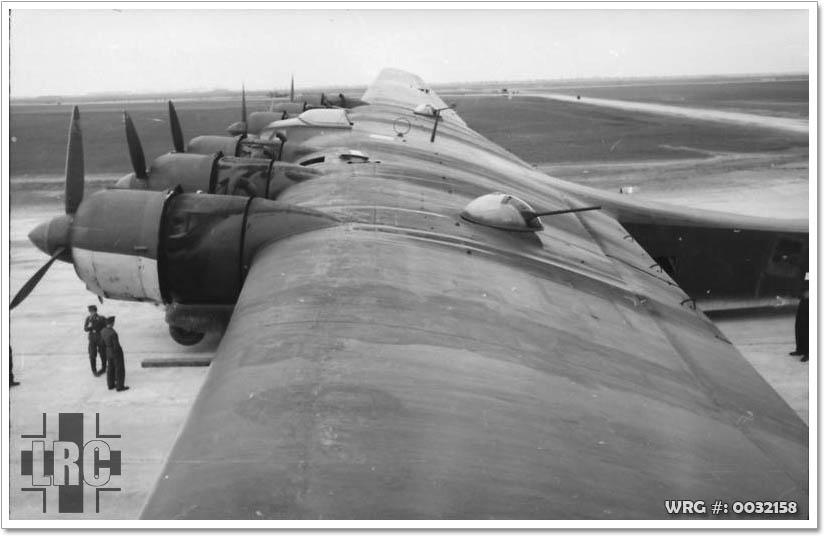LUFTWAFFE RESOURCE CENTER > TRANSPORT/UTILITY > Me 323 > PREVIOUS PAGE
Messerschmitt Me 323
Design
As per the Me 321, the Me 323 had massive, semi-cantilever, high-mounted wings which were braced from the fuselage out to the middle of the wing. To reduce weight and to save on aluminum, much of the wing was made of plywood and fabric, while the fuselage was of metal tube construction with wooden spars and covered with doped fabric, with heavy bracing in the floor to support the payload.
The "D" series had a crew of five: two pilots, two flight engineers and a radio operator. Two gunners could also be carried. The flight engineers occupied two small cabins, one in each wing between the inboard and center engines. The engineers were intended to monitor engine synchronisation and allow the pilot to fly without worrying about engine status, although the pilot could override the engineers' decisions on engine and propeller control.

[Source: Unknown]
Maximum payload was around 12 tonnes, although at that weight the Hellmuth Walter Werke-designed Walter HWK 109-500 Starthilfe RATO (rocket assisted takeoff) units used on the Me 321 were required for take off. The RATO's were mounted beneath the wings outboard of the engines, with the wings having underside fittings to take up to a total of four RATO units. The cargo hold was 11 m (36 ft) long, 3 m (10 ft) wide and 3.4 m (11 ft) high. The typical loads it carried were: One 15 cm FH18 field artillery piece (5.5 ton) accompanied by its Sd.Kfz.7 halftrack transport vehicle (11 ton), two 3.6 tonne (4 ton) trucks, 8,700 loaves of bread, an 88 mm Flak gun and accessories, 52 drums of fuel (252 L/45 US gal), 130 men, or 60 stretchers.
Some Me 321s were converted to Me 323s, but the majority were built as six-engine aircraft from the beginning; early models were fitted with wooden two-blade propellers, which were later replaced by metal, three-blade variable-pitch versions.

[Source: Bundesarchiv]
The Me 323 had a maximum speed of only 219 km/h (136 mph) at sea level and speed dropped with altitude. For defensive armament, it was armed with five 13 mm (.51 in) MG 131 machine guns firing from a dorsal position behind the wings and from the fuselage. They were manned by the extra gunners, radio operator and engineers.
Source:
Wikipedia
LUFTWAFFE RESOURCE CENTER > TRANSPORT/UTILITY > Me 323 > PREVIOUS PAGE



